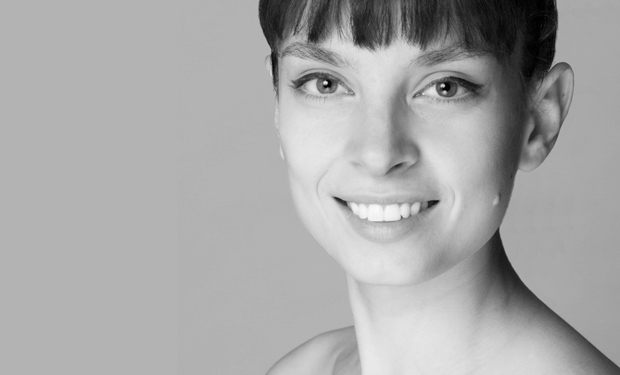
© Chris Hardy. (Click image for larger version)
Dores André may be San Francisco Ballet’s newest principal dancer, but she’s long been one of the company’s best-known names. She began her career in the SFB corps in 2004 and earned a promotion to soloist in 2012, over the ensuing decade becoming a familiar face in supporting roles like a harlot in Don Quixote, a solo Wili in Giselle and Olga in Onegin.
André’s natural style leans toward neoclassical and contemporary movement, and the SF audience has watched her advance into leading roles in SFB commissions like Yuri Possokhov’s Classical Symphony and Liam Scarlett’s Hummingbird, as well as canonical works like Balanchine’s Brahms-Schoenberg Quintet. Surely I wasn’t the only person wondering when this stalwart company member would become a principal in her own right.
Finally, at the end of the 2015 season, André joined the company’s highest rank, an achievement she long dreamed of but never expected. A native of Vigo, Spain, André didn’t start taking ballet until she was 11 years old, and then only for fun – a chance meeting with María de Avila, who invited André to study with her in Zaragoza, was the lucky break that changed the course of André’s life.
André made her principal debut with little fanfare, in a late-season matinee of Romeo and Juliet. Those fortunate enough to see her Juliet discovered a new side of this dancer we thought we knew so well: a sensitive musicality and natural acting ability, and ample charisma to lead a full-length ballet.

© Erik Tomasson. (Click image for larger version)
Her performance as Juliet not only received well-deserved ovations, it made me want to get to know André better. Turns out she is confident, forthright and plainspoken – no demure ballerina she. Between pointe-shoe fittings she shared her insights, aspirations and a few of her secrets with DanceTabs.
First of all, congratulations on your promotion.
Thank you!
You are the only new principal this season.
Am I really? Oh yes, I am.
It’s very exciting. Your debut as Juliet was beautiful. Your interpretation was so musical. It is actually not my favorite music, but when I watched you dance it, I heard it in a whole new way. I didn’t know what was in the music until I saw you dance it.
Actually, a little secret here, I copied the musicality from the video they have here of [former SFB and Hamburg Ballet dancer] Elizabeth Loscavio doing it. She finds musicality in everything. It is absolutely incredible; it is very natural to her. Copying – I do not think of it as a bad thing. I think it is a really good thing, because if you copy you are basically expressing what you like and choosing what you like. You are developing that side of you, in a way.
The role seemed very natural to you. I believed you as the character and followed an emotional path with you as you danced.
That means a lot. I am not the most technical dancer. For me, when somebody gives me a compliment and says, ‘That was executed perfectly,’ I am like, no, I doubt it. It was very likely not pure, but I mostly want people to leave with an emotion or a feeling. That is why I like going to a show – I do not necessarily want to see somebody do amazing steps, I want to be inspired for the art form.
Is Romeo and Juliet one of your favorite ballets?
Yes, I really like Romeo and Juliet. Some classical ballets are hard to relate to because of this old idea of the female being this naive thing; it does not really relate to any woman these days. But I feel like Juliet is a little bit of a rebel. The role has a complexity that other roles do not have, like Sleeping Beauty. That is mostly technique, but otherwise you are just waiting for the guy to come and kiss you and wake you up, and it is not very deep. It does not have many layers as in Juliet. She is supposed to [marry Paris]…in everybody’s life, when you are supposed to do something, then you do not want to do it because you are challenging the status quo, challenging a decision made for you. So in that sense, Juliet is very easy to relate to. That is how you want to portray a character, I think. You want to find something in yourself that is true to the character and not just like fake it.

© Chris Hardy. (Click image for larger version)
I’ve read that you take woman’s issues seriously, both inside and outside of ballet.
I consider myself a feminist. Women are definitely not treated the same. I mean, you see how many male choreographers there are, and how there are no women choreographers and there are some that are amazing. Crystal Pite is one of the best choreographers in the world, but she is one of a few. I cannot really figure out why, even though ballets for the most part are actually about women, somehow we do not have women in the higher levels in companies, like as directors or choreographers. There are a few obviously, but there are not nearly as many as men.
Let’s go back to the beginning. How old were you when you started dancing?
I was 11. I started late for ballet. And I started working with María de Avila when I was 13. I came from a school that was very, very casual. I won a competition for the school without knowing how to dance, and she was there. She told me, ‘You do not know anything, but you have great flexibility and you are very charismatic so you should come to my school.’ I did not know the names of steps, so I would make up names, like the ‘butterfly steps,’ and she was like, ‘What are you talking about?’ She would make me watch class with people my age, but she made me take the kids’ class – the kids were 6, 7, and 8 – so I would learn the basics.
If she had not been there that day, at that competition, would your life be different now?
Oh, 100 percent. I was just lucky to be in the right place at the right time, and have the right parents that let me go to a school far away from my home when I was 13. I wanted to be an architect as a kid. Up until I was 16, I still wanted to be an architect.
And now it’s your first season as a principal dancer. What will you be dancing next year?
I think I am going to be doing Coppélia. I doubt I will do Swan Lake. I will probably do Olga in Onegin. I really enjoy that role. I have done it a few times and I am interested to see what it feels like now.
What do you like about dancing Olga?
It makes you grow technically a lot, because it is not easy. You can play it in a dumb, smiley, flirty way, but I feel like there is a lot more happening with her. I feel like she is actually jealous of Tatiana in a way. I think that she wants a man’s attention to show her sister that she can do that too, if she wants to. Cranko’s stuff is interesting because the musicality is very different, and the steps are very different. It is also very demure – dancing in the States is usually ‘the bigger the better,’ and when we go to this European role, everything gets smaller in a way. There is more finesse to it, and it is less showy. It is more character-based and less ‘ballerina,’ less physical in a way.
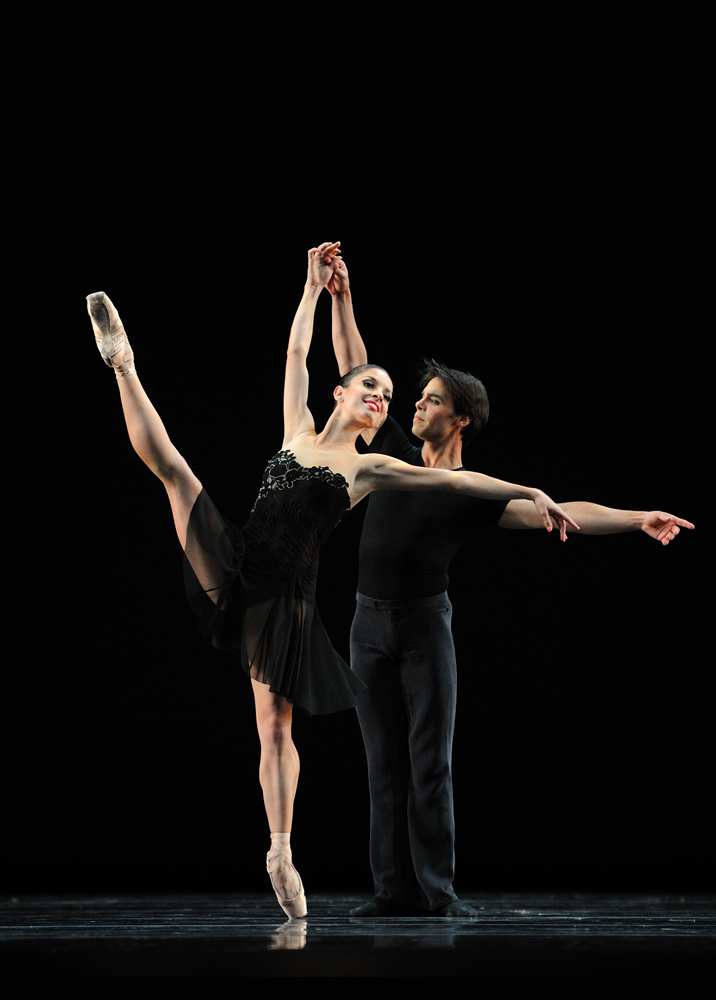
© Erik Tomasson. (Click image for larger version)
There is also a lot of contemporary ballet on the schedule for next year.
I am really excited to work with William Forsythe [on Pas/Parts] – very, very excited about that. We did The Vertiginous Thrill of Exactitude last year; we only got a few rehearsal dates with him, but he is incredible. You can learn so much in hours of being with him.
What did you learn on Vertiginous?
Vertiginous is very technical. For me – for everybody, I think – it is a very hard ballet to do. He was like, ‘Don’t worry about it. I really don’t care if you finish the pirouette. I just want you to be this type of character.’ It is not making fun of classical ballet, it is taking classical ballet and being like, ‘Here’s what I can do, can you do this?’ In some variations in classical ballet, it is very obvious that the ballerina is trying to show off, but at the same time, pretending that it is nothing – ‘Yeah, I am doing triple pirouettes, but I am not going to let you know that this is hard.’ Vertiginous is somewhat the opposite of that. Like, ‘I am doing this and it is very hard, and I want you to know that it is very hard, but I can control it.’ I did not realize that until he said it, and then it kind of the changed the mood of the ballet. It stopped being so serious, and it becomes a little lighter.
Vertiginous is very joyous in that way. And when people do it well, it is so much fun to watch.
It is not easy to do that well.
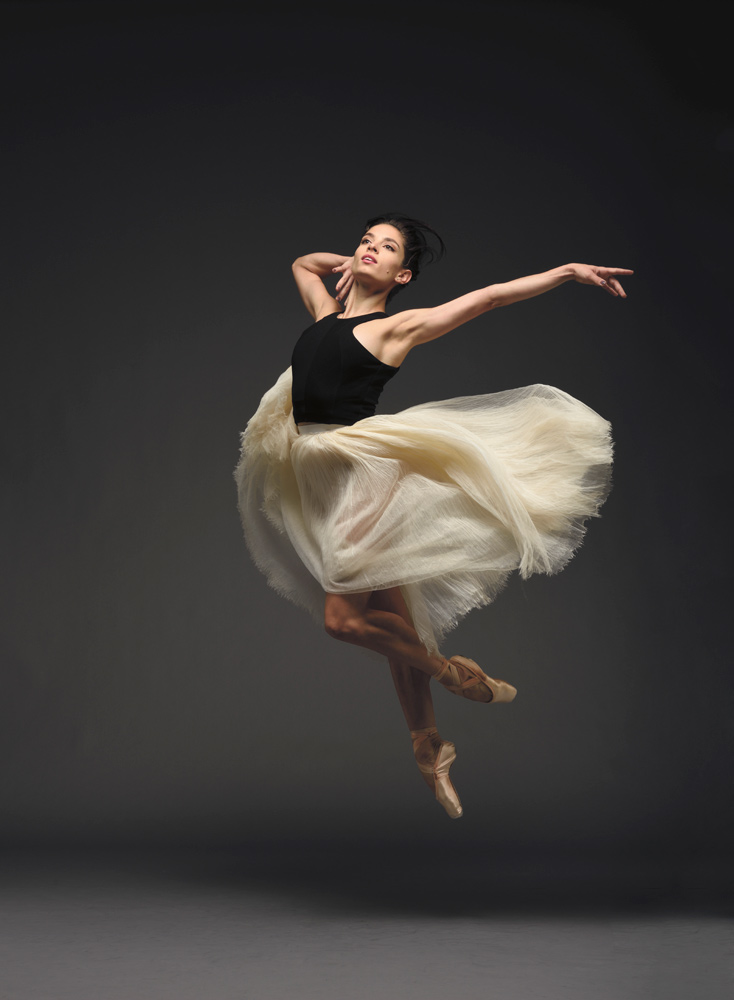
© Erik Tomasson. (Click image for larger version)
I believe you! There are also some world premieres on the schedule.
I cannot wait for the ones with Justin [Peck] and Liam [Scarlett], if I am in them. I hope I am. I saw Justin in Everywhere We Go in New York last year. It almost made me cry. I usually do not get emotional watching the ballet, but somehow this ballet was very understated, and it was very emotional at the same time. I loved also the music and the set. His taste is impeccable.
How about Liam Scarlett?
Liam is special. He is very encouraging. He is one of those people that are very good at correcting and making you a better dancer. He told me when we were working on Hummingbird, ‘You have a beautiful face and you don’t even use it. You wait until you are on stage to use it, and it is too late. You can develop the way you express yourself with your face in rehearsal, from the very beginning.’ I always felt like you perform onstage, and when you rehearse, you rehearse. It does help a lot to use your eyes, look at your partner and be conscious of your facial expressions from the very beginning. It changes the mood of the rehearsal. It makes you more into it. It is one of those corrections that I will keep forever.
With that in mind, how would you say that you have grown as a dancer over your 11 years with the company?
Whatever I dance, I try to take it as seriously as if it was a Juliet or a full-length. To not take for granted even the smallest parts, and give them the 100 percent you can give. Another thing I realized is how much I have learned from my peers and from watching other companies. Every time I go to New York and I watch New York City Ballet, I am very inspired. I try to go see them all the time. I find them fascinating. They are so different, and they are so good. There are so many things I feel like I can learn from them. And in SFB, the principals are ridiculous. Frances [Chung] – her technique is insane. Sarah’s [Van Patten] dramatic intelligence. Lorena’s [Feijoo] charisma. Yuan Yuan’s [Tan] elegance. Sofiane’s [Sylve] coolness. Vanessa [Zahorian] is a powerhouse. Masha [Maria Kochetkova] is just – everything, really. What I take from her more than anybody is work ethic. She works so hard, and it shows. When you see how much she works, you are like, okay, that is what you have to do. You have to work that hard.
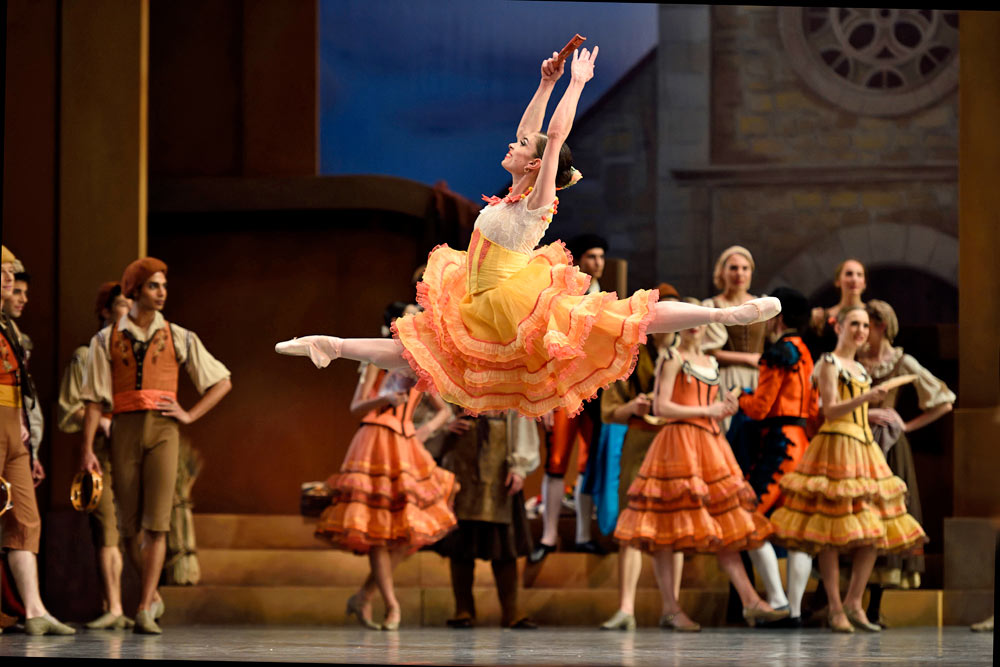
© Erik Tomasson. (Click image for larger version)
So are you kicking up your own work ethic, now that you are a principal?
I am trying [to use] the hours we have of rehearsal properly, and not check on your phone or not just mark. Sometimes we get lazy, and it is acceptable sometimes; everybody has days where they are tired. But it is a good reminder to try 200 percent in the studio so it looks decent on stage.
The status [of being a principal], I really do not care that much about. I care about just having more one-on-one time with choreographers. Because that is what makes me happy, going every day in the studio one-on-one, because you get to learn more and develop more. When you are in the corps, it is the hardest thing; you do not get to improve personally, you improve as a collective, and it is very hard. It is so selfless. If it was up to me, I would pay more [salary] to the corps than to the principals. Half the ballet depends on them, and it is very hard to be in a good mood and trying your hardest every day when you are not getting the attention and the development that we get as principals and soloists. It is tricky. Being in the corps is very hard.
You said that you really admire New York City Ballet. Do you think of yourself as a neoclassical dancer?
I think so. I do not like putting people in boxes, you know. People always will surprise you. But I am definitely more comfortable with neoclassical contemporary than classical. But I would like to change that and make my spectrum as big as it can be, and go from the most classical to the most contemporary. I would love to be that versatile.
In your personal life, you seem like a very free spirit.
I like to paint. I am trying to learn how to sew. I just have these little creative things. I think it is how I feel my best, creating new things. That is why I like new ballets and creating the new ballets.
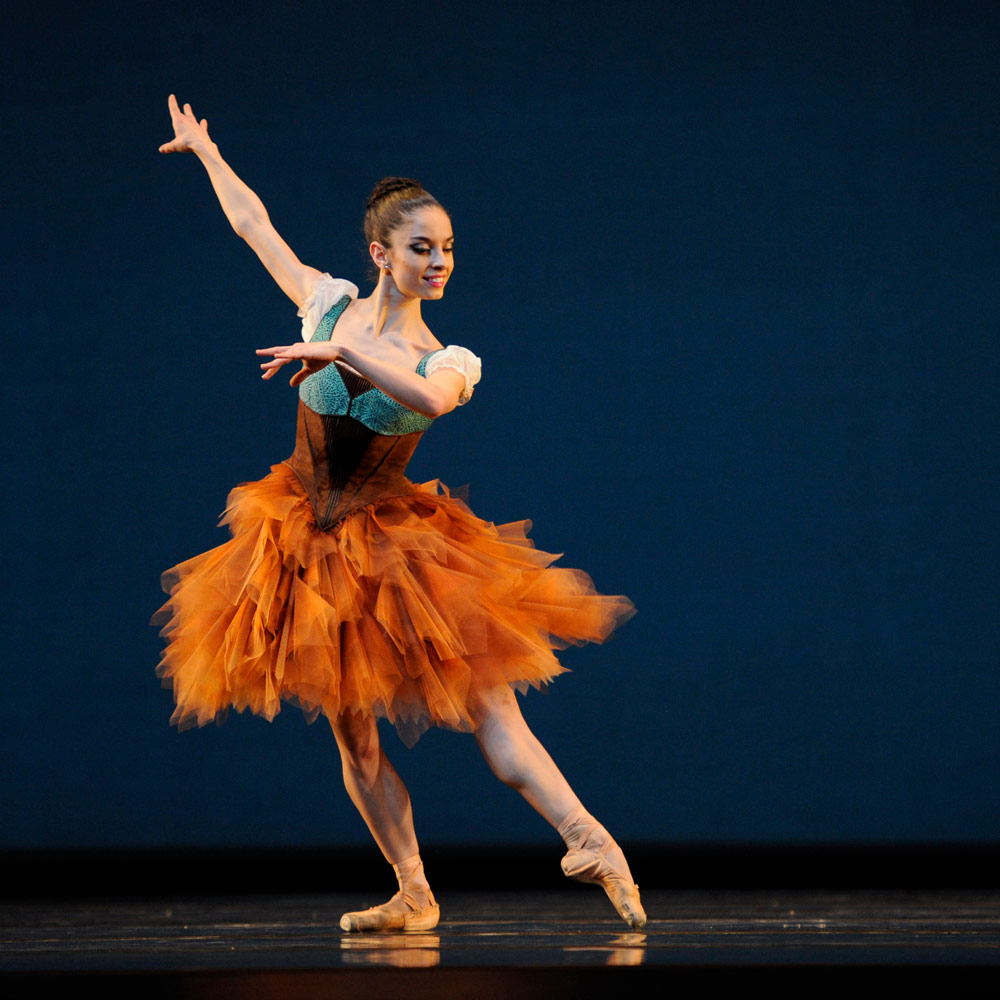
© Erik Tomasson. (Click image for larger version)
You are into fashion as well.
Yeah. I spent too much money. You get to go out every day and present yourself in a certain way, and it is a first impression people have on you. I feel like when you wear certain things and you have a certain style, people assume you are certain way. It is a presentation.
I guess you’re playing a character, and that character is you.
A character, it is me. I am playing myself every day.
Thank you very much, Dores. And congratulations again.
Thank you.







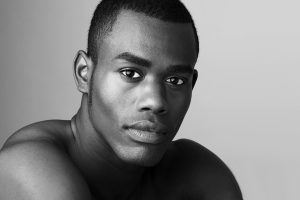


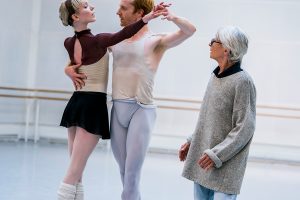
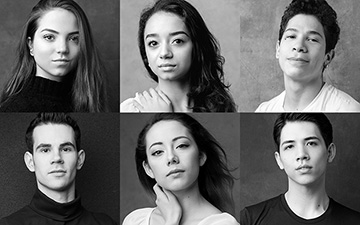

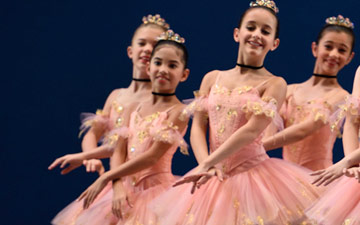


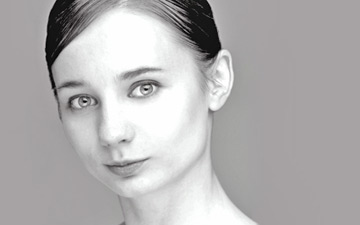
You must be logged in to post a comment.